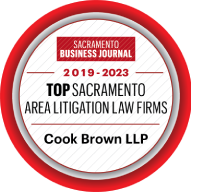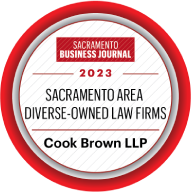This month the National Labor Relations Board (the “NLRB” or the “Board”) issued a proposal to broaden the standard for determining joint employer status under the National Labor Relations Act (“NLRA”), thereby replacing the current “final joint employer rule” on the subject.
What is Joint Employment and Why Does it Matter?
Joint employment refers to situations where two or more entities are considered employers of the same employee. Business relationships that may create joint employment include those between a company and a staffing agency, an independent contractor, or a third-party management company.
Unknowingly entering a joint employment relationship means a company could unexpectedly expose itself to significant liability for employment claims, including costly wage and hour class actions, for the practices of another company. For example, a staffing agency could be liable for unpaid wage claims or other violations if its temporary employees are assigned to a company with sub-par wage and hour practices. Within the NLRA context, entering a joint employer relationship can create rights and obligations related to collective bargaining, strike and picketing activity, and unfair labor practice liability under the NLRA.
How Did We Get Here?
The Board’s proposal, if enacted, would revert the joint employer standard by the better part of a decade, replacing the current “final rule” in effect since April 2020 with a broader standard reminiscent of the 2015 Browning-Ferris decision.
The Old Browning-Ferris Standard
In the 2015 Browning-Ferris, the Board expanded the standard for whether an entity is a joint employer under the NLRA, creating liability for many companies. Specifically, Browning-Ferris eliminated the prior, more restrictive requirement that an employer must exercise “direct and immediate” control over an employee’s essential terms and conditions of employment, finding instead that indirect control was sufficient, even if such control was never exercised. The Board reasoned that this broader interpretation more closely comported to common law agency principles.
The Current 2020 Final Rule
However, the Browning-Ferris decision faced significant negative scrutiny. As a result, the NLRB proposed a new “final rule” in May 2018 to essentially unwind the Browning-Ferris standard. This “final rule” has been in effect since April 27, 2020.
The “final joint employer rule” rejected Browning-Ferris’s broad standard whereby indirect control was sufficient to establish joint employment, and returned to the requirement of “direct and immediate control” over essential employment terms and conditions. Among others, the 2020 rule aimed to provide greater certainty to employers in structuring their businesses, give employees a better understanding of their employment circumstances, and provide clarity to unions regarding with whom they have a collective bargaining relationship.
The Proposed Rule
Despite the 2020 “final rule” only being in place for two-and-a-half years, the Board now seeks to replace it with a new rule that returns to the Browning-Ferris standard, if not broader. Under the proposed rule, a joint employer relationship is established where two or more employers “share or codetermine those matters governing employees’ essential terms and conditions of employment.” These essential terms and conditions broadly include:
wages, benefits, and other compensation; hours of work and scheduling; hiring and discharge; discipline; workplace health and safety; supervision; assignment; and work rules and directions governing the manner, means, or methods of work performance.
Moreover, all that is required for a company to “share or codetermine” the above terms and conditions, thereby establishing a joint employer relationship, is to have the authority to control them, even if only indirectly, and even if that authority is never exercised.
While the endorsing Board members champion the new rule as a means to bring clarity and certainty to the joint employer standard, dissenting members claim it achieves the opposite, creating a standard that is impermissibly vague and leaves unions, employers, and employees searching for guidance in common law with which they are likely unfamiliar. The dissenting Board members further assert that there is no valid justification for again enacting a new standard, as the 2020 rule has been in place for only two-and-a-half years with no opportunity to apply it in a single case.
How to Protect Yourself
The proposed standard’s expansive interpretation of “share or codetermine” could create a potential minefield for employers to unintentionally create a joint employer relationship and shoulder all the potential liability that comes with it. After all, under the new standard’s interpretation, an overlooked contractual reservation of rights to indirect control of a single “essential term or condition,” even if such control was never exercised, could be determinative of joint employment.
Employers should be prepared for the enactment of this new standard, which is arguably even broader than Browning-Ferris. Employers should review not only the plain terms of their subcontractor and staffing agreements as they pertain to control over temporary employees, but also how these terms are applied in practice. For example, a staffing agency could take steps to ensure day-to-day supervision, supplying of tools, setting of schedules, wage increases/decreases, and authority to hire, discharge, and/or discipline a temporary employee lie solely with the business to which it is assigning its temps. By relinquishing control over temporary employees’ essential terms and conditions of employment in this way, the staffing agency can help protect against claims that it is a joint employer.
What Comes Next?
Employers who are interested in submitting comments have until November 7, 2022. Replies to the comments submitted during this initial comment period will be accepted through November 21, 2022, after which the NLRB will issue a final rule upon review of the public comments.

